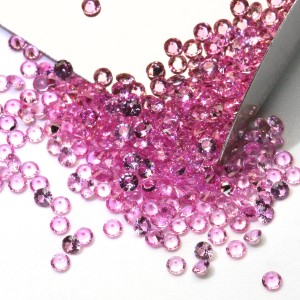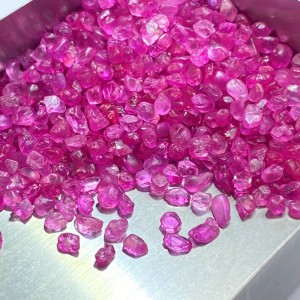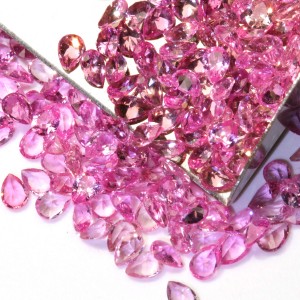Sapphire has long fascinated gemstone lovers with its allure and rich history. While blue sapphires are best known, delicate pink sapphires hold their own charms too. In this article, we embark on a journey to discover the rarity of pink sapphires, uncover what makes them rare, delve into their fascinating color variations, and learn why they hold a special place among gem lovers. The Rarity of Pink Sapphires Pink is one of the rarest and most popular colors of sapphires. Pink sapphires, like blue sapphires, belong to the corundum family. However, it is the trace amounts of chromium, titanium and iron in the gemstones that give them their stunning pink hue. The precise amount of these elements combined with the specific geological conditions during gemstone formation is a rare and complex process.
Natural pink sapphires are therefore truly extraordinary gemstones, notable for their rarity. Origin and Mining Pink sapphires are known for their attractive rose color and vivid fuchsia, and can be found in limited areas around the world. Some of the main sources of pink sapphires include Madagascar, Sri Lanka, Myanmar and certain parts of East Africa. These gem-rich regions have unique geological formations and mineral deposits that provide the ideal environment for growing pink sapphires. Mining operations in these areas require careful and meticulous extraction to ensure the preservation of these precious gemstones.
Natural and Treated Pink Sapphires Pink sapphires occur naturally, but can also undergo various treatments to enhance their color and clarity. For example, heat treatment is a common method of enhancing the pink color of sapphire. While treated pink sapphires can display extraordinary beauty, untreated natural specimens are rarer and more valuable. Recognizing the differences between natural and treated sapphires is crucial for collectors and buyers seeking truly extraordinary pink sapphires. Color Variations and Needs Pink sapphires come in a variety of shades, from delicate pale pink to vibrant hot pink. Pink sapphires vary widely in saturation, hue, and tone, adding to their personality and appeal. The most popular pink sapphires have a vibrant, rich hue without being too dark or too light. The balance between saturation and clarity is critical in determining the value of a pink sapphire. Additionally, pink sapphires that are uniform in color throughout the gemstone are preferred over pink sapphires that have an uneven color gamut or distribution. Rarity and price factors The scarcity of pink sapphires greatly affects their price and exclusivity in the market. Although pink sapphires are more abundant than colored diamonds, they are still considered quite rare. Natural growth, correct color saturation and exceptional clarity combine to create stunning gemstones that are coveted by collectors and jewelry enthusiasts around the world. Therefore, prices for high-quality pink sapphires can be considerable, especially for larger stones that exhibit exceptional color intensity and crystal clarity. Pink Sapphires in Jewelry Pink sapphires are increasingly popular in jewelry, adorning everything from engagement rings to earrings and pendants. The romance and femininity of pink sapphire combined with its rarity make it a coveted choice for those looking for an alternative to traditional gemstones. The delicate, soft hue of pink sapphire complements a variety of metals including white gold, yellow gold and platinum, enhancing the versatility of its design
Conclusion Pink sapphires continue to captivate gem lovers and jewelry enthusiasts with their stunning hues and limited availability. Their rarity increases their demand and market value due to specific geological conditions and trace elements. The allure of pink sapphire lies not only in its captivating color variation, but also in its inherent association with elegance and romance. With the ever-increasing demand for unique and precious gemstones, pink sapphires are truly extraordinary and highly sought-after treasures in the gem world.
Post time: Jul-10-2023



